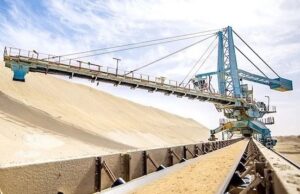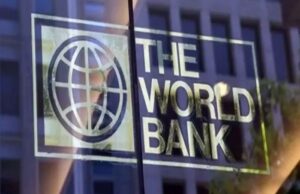
The treasury proposed R254 billion in debt relief to Eskom over the next three years, stated Finance Minister Enoch Godongwana.He made the announcement in his budget speech to parliament, which he delivered as the country endures persistently high levels of load-shedding. The debt relief — which amounts to almost as much as Eskom has received in bailouts since 2008 — will come in the form of about R168 billion in capital and R86 billion in interest, according to the treasury’s 2023 budget document.
The treasury proposed R254 billion in debt relief to Eskom over the next three years, stated Finance Minister Enoch Godongwana. He made the announcement in his budget speech to parliament, which he delivered as the country endures persistently high levels of load-shedding. The debt relief — which amounts to almost as much as Eskom has received in bailouts since 2008 — will come in the form of about R168 billion in capital and R86 billion in interest, according to the treasury’s 2023 budget document.
This is to strengthen the utility’s balance sheet, enabling it to restructure and undertake the investment needed to support the security of the electricity supply. Godongwana said in his speech that, because of the structure of the debt relief, Eskom will not need to borrow more money during the three-year period.
The state-owned utility’s debt has hamstrung its ability to maintain its ageing coal fleet, which has fed into the country’s 15-year energy crisis, which has deteriorated further since October last year. A couple of days back, Eskom announced the country would again be plunged into stage six load-shedding.
The debt relief plan, according to the budget document, has been the subject of extensive consultation with Eskom and other stakeholders. Its success rests on the implementation of key reforms that address the inadequacies of the transmission network and the performance of existing power stations. The reforms form part of certain obligatory conditions for the relief, including the designing of a mechanism for building new transmission infrastructure that will allow for extensive private sector participation. The treasury has also appointed an international consortium to review all of Eskom’s coal-fired plants, which will advise on operational improvements. According to the budget, the consortium’s review is scheduled to conclude by mid-2023 and Eskom is required to implement its recommendations.
Also Read:
https://trendsnafrica.com/black-council-lashes-out-at-eskom-management/
https://trendsnafrica.com/eskom-ranked-as-the-worlds-top-polluter/
https://trendsnafrica.com/south-african-government-contemplating-taking-over-part-of-eskoms-debt/
The consortium consists of VGBE Energy, Dornier Power, KWS Energy, RWE Technology, and Steag Energy. The independent assessment will be used to further strengthen the conditions in Eskom that relate to plant management.
The effect of Eskom’s decline — including its drag on the economy — has become particularly acute in recent months, as persistent and high levels of load-shedding threaten to obliterate growth. Last month, the South African Reserve Bank’s monetary policy committee had a dire prognosis for the country’s crisis-hit economy, forecasting that GDP would grow by a mere 0.3% in 2023.











